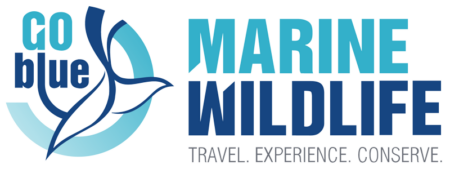Ocean-going mothers everywhere deserves a special salute.They give birth well into their twilight years while human females call it quits 40 years earlier.In fact, human females are the oddballs here and a bit of a puzzle. Evolution favors those who leave the MOST offspring. Yet the average human mother has her last child at the age of 38 — with menopause and the loss of fertility often occurring at about 50 — even though she will typically live well into her sixties in hunter-gatherer societies, and much longer in societies with modern medicine.
 Wisdom is s 60 year-old albatross. She holds the seabird records for both oldest bird and oldest new mother. No stranger to motherhood, it is estimated that she has already birthed 30-35 other chicks. And Wisdom is hardly alone – baleen whales can reproduce well into their 90s!
Wisdom is s 60 year-old albatross. She holds the seabird records for both oldest bird and oldest new mother. No stranger to motherhood, it is estimated that she has already birthed 30-35 other chicks. And Wisdom is hardly alone – baleen whales can reproduce well into their 90s!
But we are not entirely unique. Short finned pilot whale females live until they are 54 years old but stop breeding by age 36. Killer whale females stop breeding after roughly 48 years and can then live to the ripe old age of 90. Sound familiar!? What makes female humans, short-finned pilot whales and killer whales throw in the towel after the 5th inning of the baby-making game?
The “mother effect” suggests that after a female has a certain number of children, she puts them at a disadvantage by continuing to engage in the risky business of childbirth. Similarly, the “grandmother effect” suggests that older females can leave more surviving relatives by helping their children’s children than by having more of their own. But these hypotheses don’t do much to explain why humans and some whales but no other species should evolve the menopausal strategy.
 Lastly, there is the “reproductive conflict hypothesis” or as we like to call it “the Father of the Bride 2 hypothesis.” This theory suggests that there are simply not enough food and resources for a mother and a daughter to simultaneously raise a baby. This theory helps to explain why a woman tends to go through menopause just as her children become ready to reproduce.
Lastly, there is the “reproductive conflict hypothesis” or as we like to call it “the Father of the Bride 2 hypothesis.” This theory suggests that there are simply not enough food and resources for a mother and a daughter to simultaneously raise a baby. This theory helps to explain why a woman tends to go through menopause just as her children become ready to reproduce.
So what do people, killer whales and short-finned pilot whales have in common when it comes to reproductive conflict? We care for our young for a long time. We live in packs. And we hunt in groups. But so do lots of social mammals. The more typical pattern is for younger females to help older females rather than the reverse – we need to look deeper to find out what causes the switch.
One piece of the puzzle may lie in the fact that human females (unlike most female mammals, who tend to stay put) often leave their own families to join the families of their husbands. This means that when they first arrive, they have no relatives nearby to help and so it makes sense to focus on their own kids. But that changes as they get older and their sons start having children.
 Menopausal female whales find themselves in a similar situation for different reasons. In these species, both males and females stay in their groups most of the time, but they leave them to mate. This means that a female’s daughters’ offspring stay in the group, so that once again as she gets older she has more relatives to help. This may also explain why before menopause females take better care of their sons – daughters are weaned at 4-6 years but sons are cared for into their teens. This makes sense because her sons’ offspring are elsewhere and so don’t compete with her own.
Menopausal female whales find themselves in a similar situation for different reasons. In these species, both males and females stay in their groups most of the time, but they leave them to mate. This means that a female’s daughters’ offspring stay in the group, so that once again as she gets older she has more relatives to help. This may also explain why before menopause females take better care of their sons – daughters are weaned at 4-6 years but sons are cared for into their teens. This makes sense because her sons’ offspring are elsewhere and so don’t compete with her own.
Who would have thought that marine mammals might help us understand human menopause? Of course the question remains – does a life spent cooled by the ocean help menopausal whales deal with hot flashes? These are the mysteries of the ocean we may never know.
Info source:
Dr. Nancy Knowlton, Sant Chair for Marine Science at Smithsonian’s National Museum of Natural History..”
Co -wrtitten by Amanda Feuerstein,












